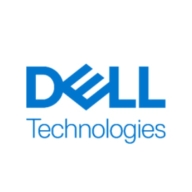

FlexPod XCS and Dell VxBlock System compete in the converged infrastructure space, with FlexPod XCS having an edge due to its seamless vendor collaboration, which enhances support and reduces operational costs.
Features: FlexPod XCS is defined by its pre-tested and certified components, flexible scalability, and a unified support model that simplifies vendor interactions. Dell VxBlock System excels in delivering a robust architecture, reliable performance, and effective integration in demanding environments.
Room for Improvement: FlexPod XCS could improve its unified management to further ease the complexity of handling multiple vendors. Dell VxBlock System needs enhanced management integration and consistent support. Both solutions would benefit from better automation and user interface simplicity.
Ease of Deployment and Customer Service: FlexPod XCS offers adaptability across hybrid and private clouds, backed by a unified contact point for NetApp and Cisco, which reduces troubleshooting time. Dell VxBlock System provides straightforward deployment but faces persistent management complexities. Both systems benefit from strong vendor interactions, with FlexPod's integration offering a smoother user experience.
Pricing and ROI: FlexPod XCS, though higher in upfront cost, offers value through long-term benefits such as scalability, streamlined operations, and robust support, justifying its price through easier management and integration. Dell VxBlock System is also noted for its pricing, which aligns with comprehensive service. Both promise high ROI, but FlexPod's vendor collaboration often results in reduced costs over time.
| Product | Market Share (%) |
|---|---|
| FlexPod XCS | 11.7% |
| Dell VxBlock System | 10.2% |
| Other | 78.1% |


| Company Size | Count |
|---|---|
| Small Business | 5 |
| Midsize Enterprise | 2 |
| Large Enterprise | 8 |
| Company Size | Count |
|---|---|
| Small Business | 34 |
| Midsize Enterprise | 66 |
| Large Enterprise | 182 |
VxBlock and Vblock Systems simplify all aspects of IT and enable organizations to achieve better business outcomes faster. Seamlessly integrating enterprise-class compute, network, storage and virtualization technologies from industry leaders Cisco, Dell EMC, and VMware, VxBlock and Vblock Systems, powered by Intel Xeon processors, deliver the world's most advanced converged infrastructure: engineered, manufactured, managed, supported and sustained as one, allowing you to focus on your business.
The Dell EMC Converged Systems portfolio offers choice, flexibility, and reliability for accelerating IT transformation - VxBlock System offers additional levels of flexibility with a choice of network virtualization from VMware NSX or Cisco ACI.
Dell EMC VxBlock System Will Help You:
With Dell EMC VxBlock System You Can:
Dell EMC VxBlock System Features:
Dell EMC VxBlock System Benefits:
Reviews from Real Users:
“It's a highly optimized piece of equipment that doesn't give us any problems." - Architect at a manufacturing company
"It's at least 99 percent problem-free because it's factory-built. So from an informational point of view, everyone trusts that VxBlock has been tested well at the factory and has been configured to their requirements.” - General Manager, Enterprise Technical Solution at a tech services company
"The monitoring and management parts are the most valuable. Monitoring is specifically valuable because you have one console to monitor everything. This console is called Vision.” - Data center Manager at a financial services firm
FlexPod XCS is the secure platform your applications need from edge to cloud. Easily manage your suite of cloud-native, edge, and enterprise apps. Integrate advanced cloud services without compromising performance, security, reliability, or scale.
We monitor all Converged Infrastructure reviews to prevent fraudulent reviews and keep review quality high. We do not post reviews by company employees or direct competitors. We validate each review for authenticity via cross-reference with LinkedIn, and personal follow-up with the reviewer when necessary.